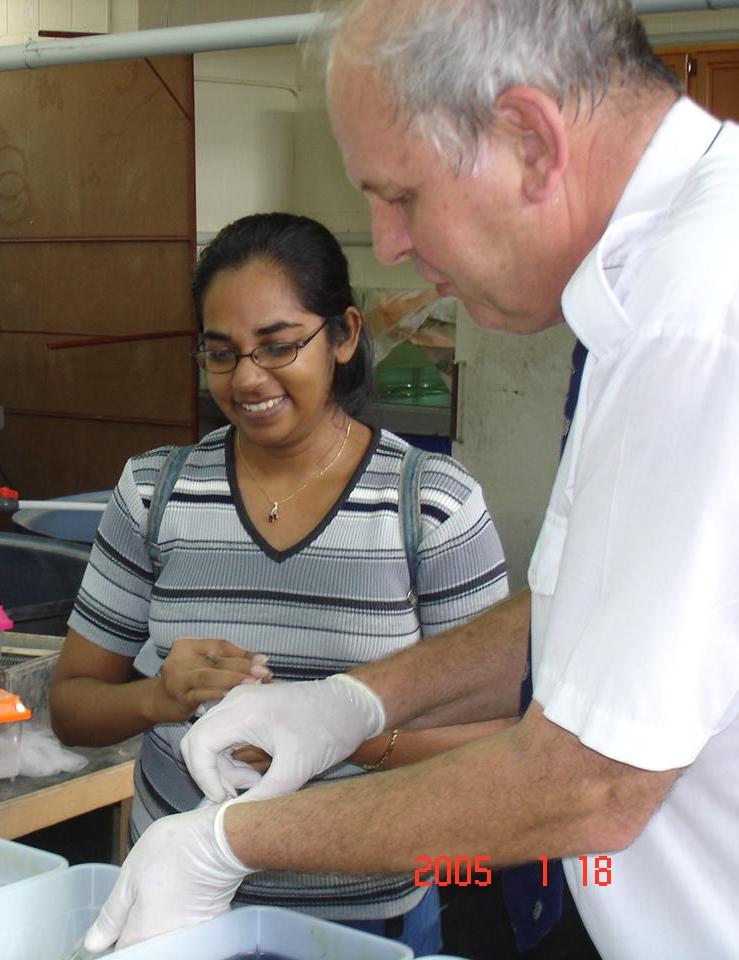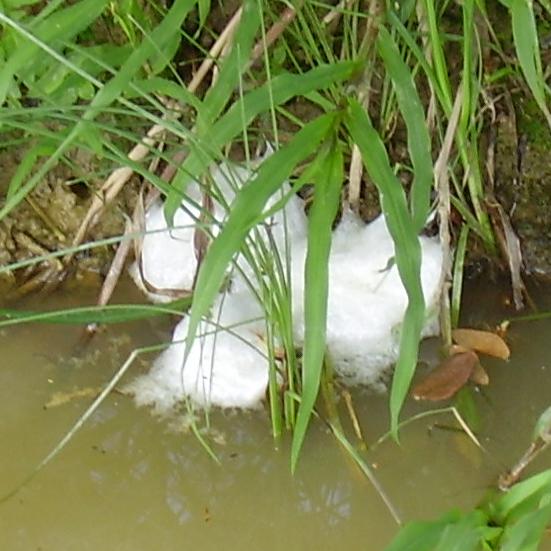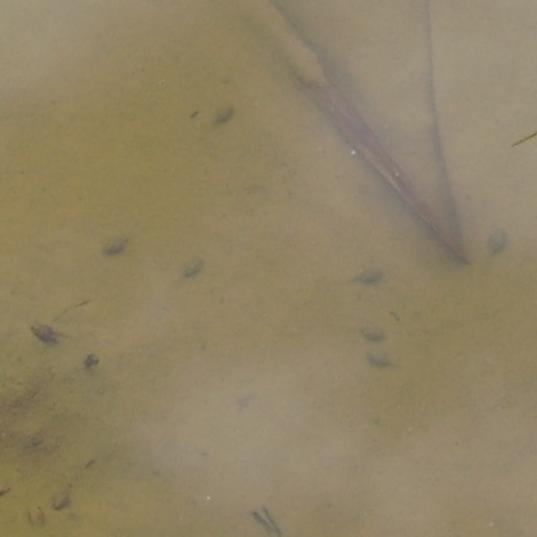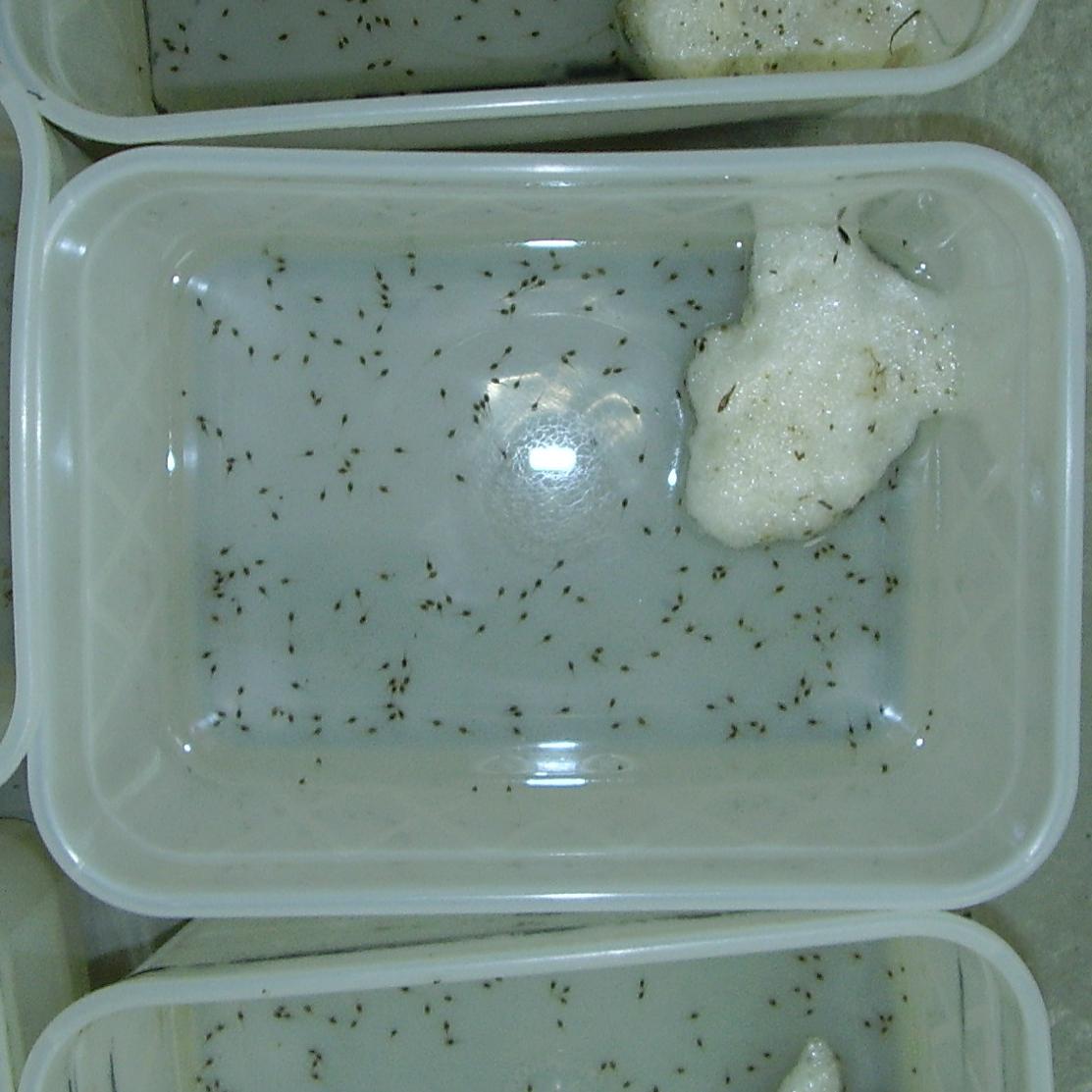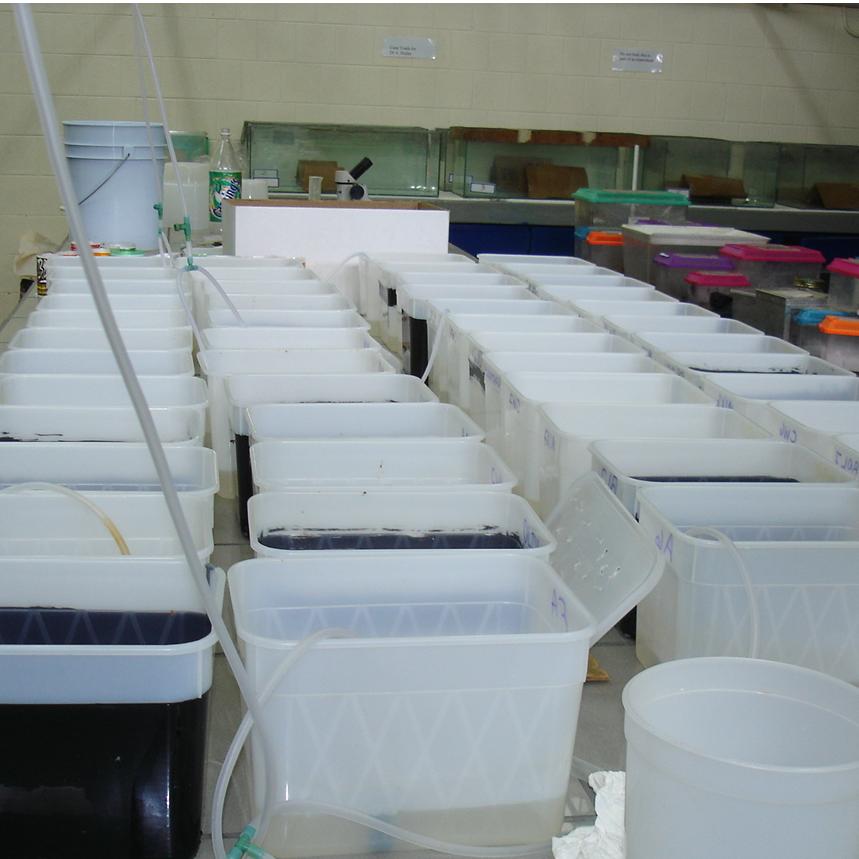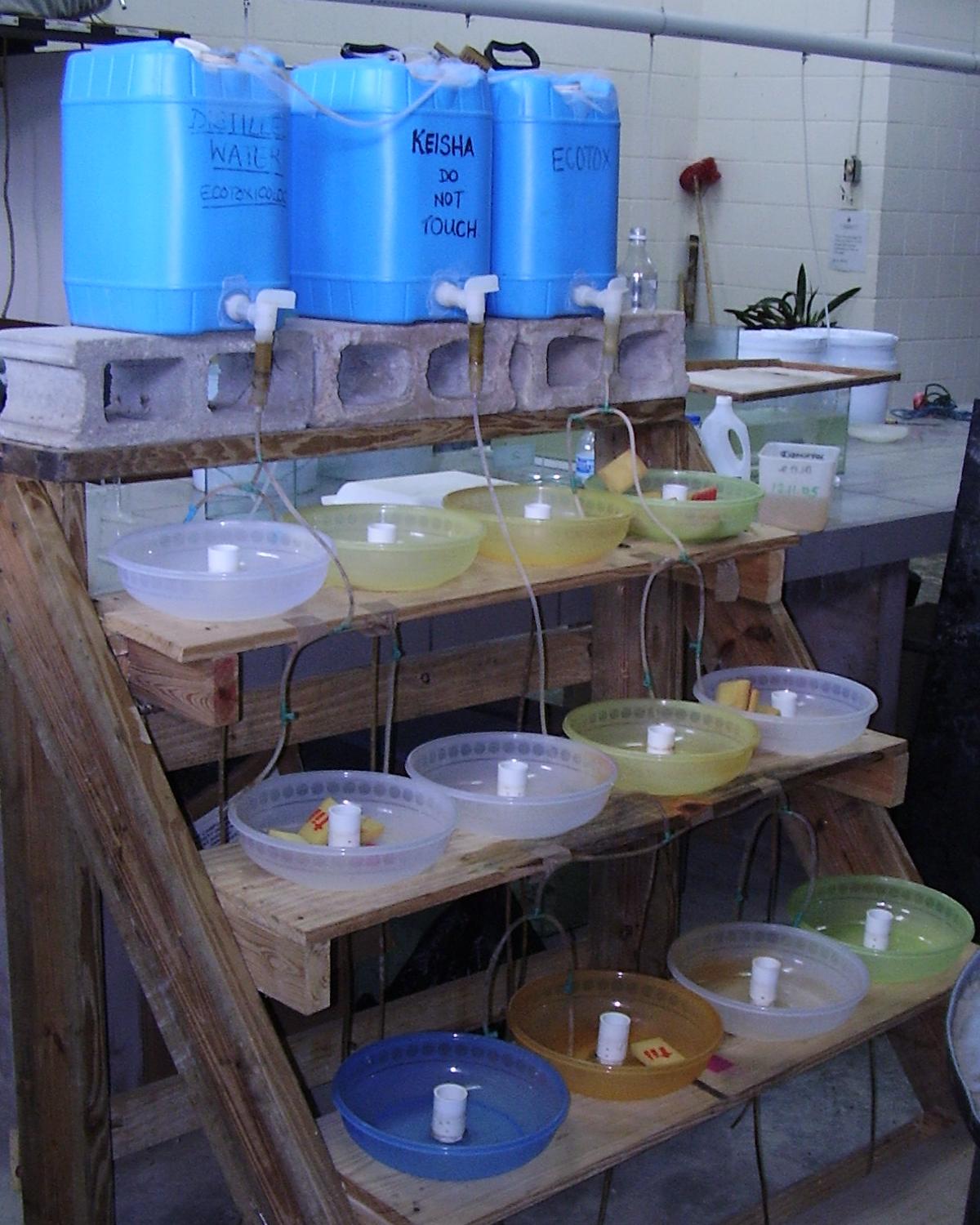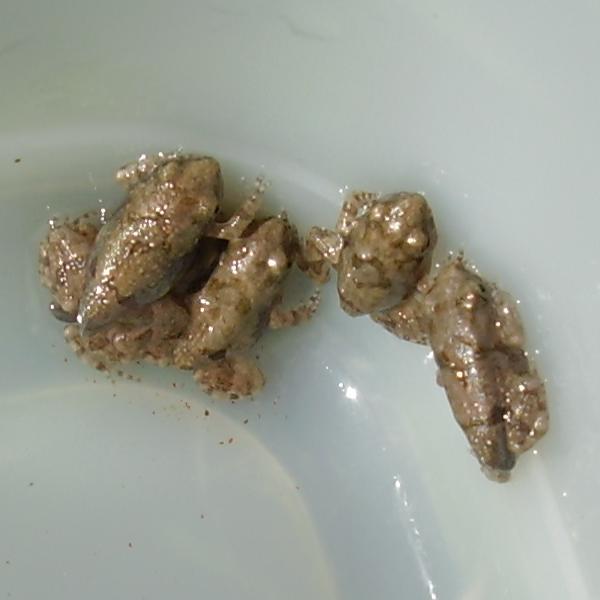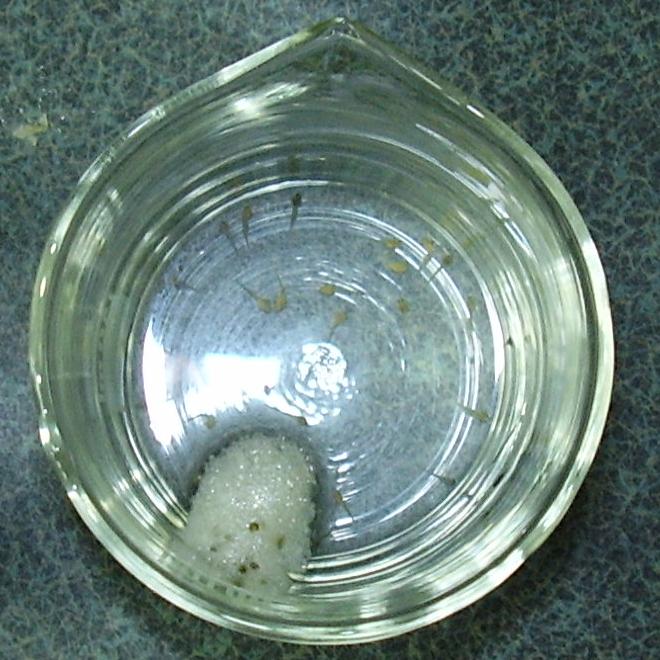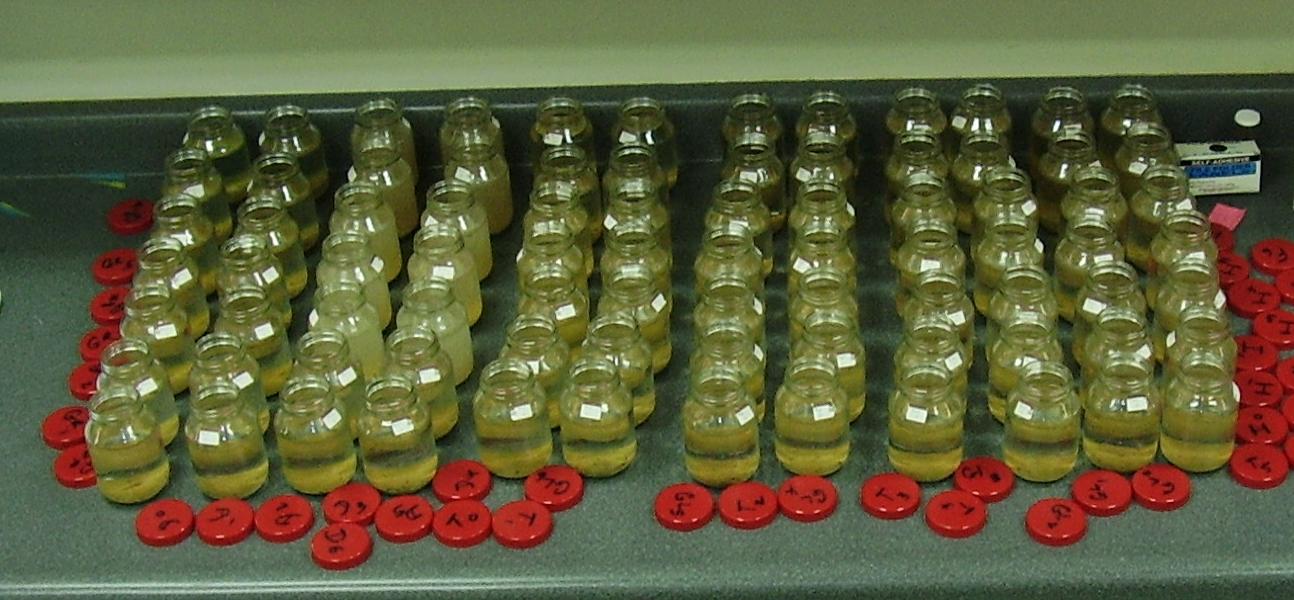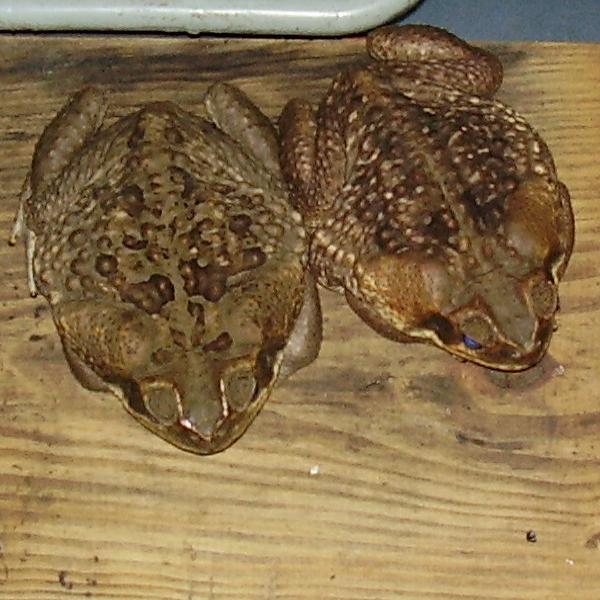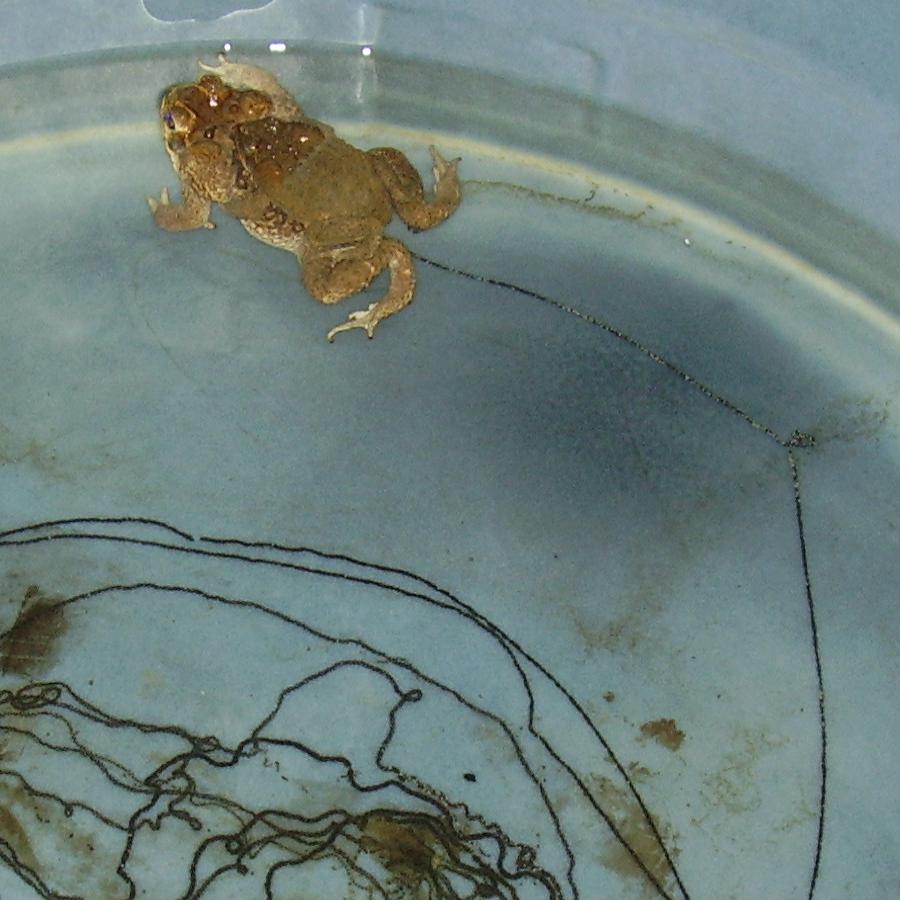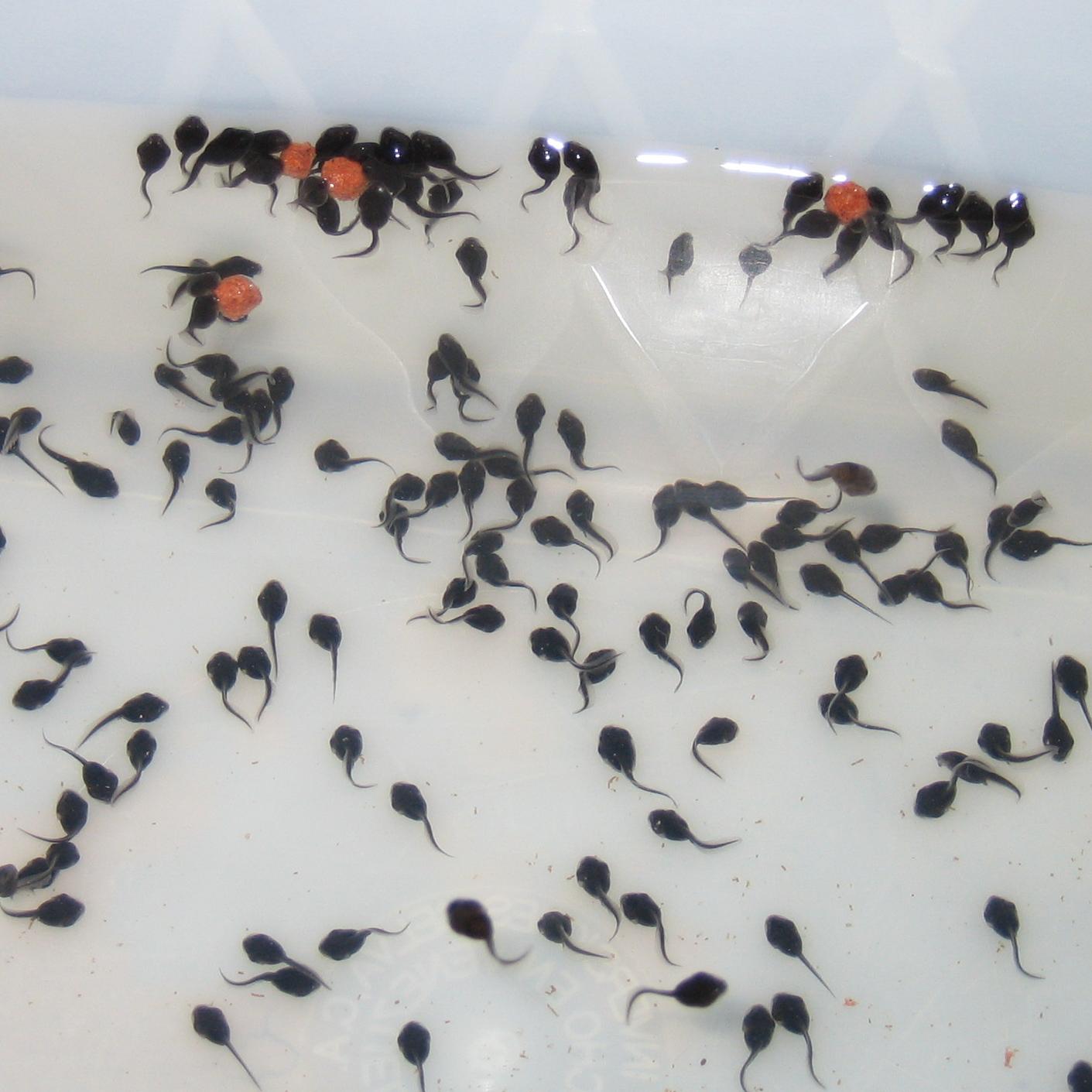Although there is now a wealth of data on amphibian ecotoxicology, these data pertain
to a relatively narrow range of taxa and ecological types.
The atypical aquatic pipid Xenopus and temperate ranids and bufonids that have the common
reproductive strategy of aquatic eggs and larvae account for a large percentage of the
available information (Rowe et al., 2003). The Leptodactylidae, the largest family of anurans,
have been neglected: McDiarmid and Mitchell (2000) list no leptodactylids
among species that have been used in tests to evaluate water quality criteria chemicals,
compared with 12 species of Bufo and 16 of Rana.
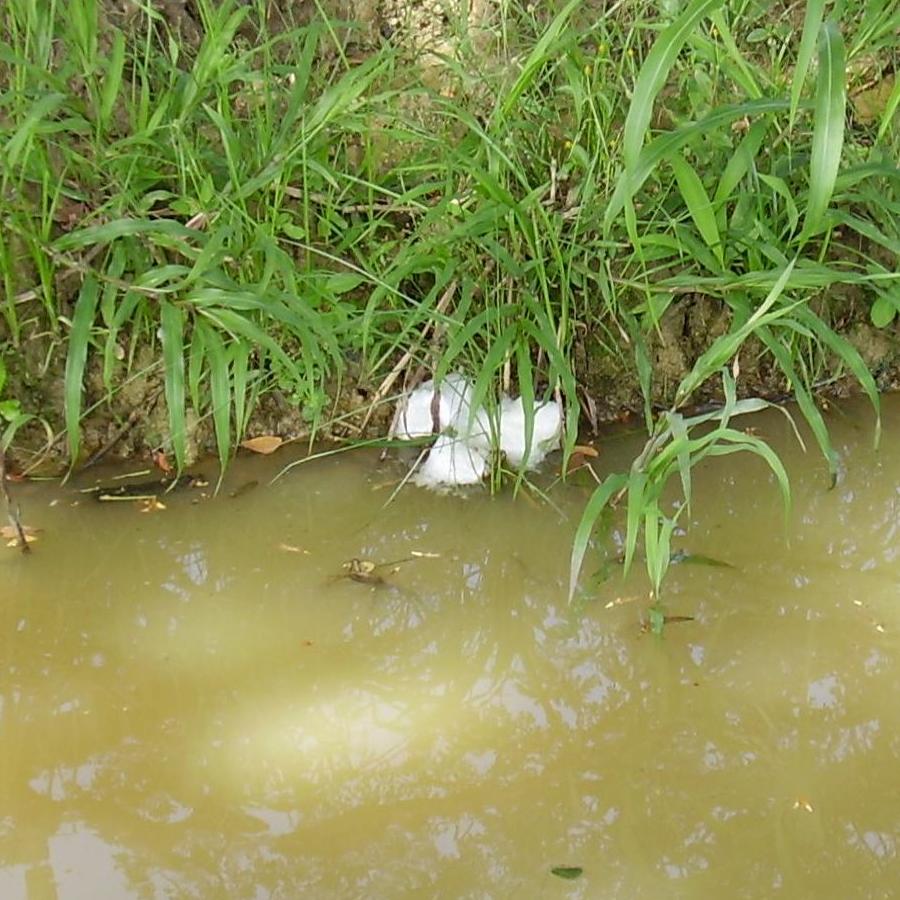 Leptodactylids are also of interest in having
diverse reproductive modes including aquatic and terrestrial foam nests and direct terrestrial
development, and in being an important component of the fauna of
the Neotropics, an area of particular conservation concern for amphibians (Young et al., 2004).
Physalaemus pustulosus is the best-studied leptodactylid with classic work on many aspects
of its ecology and behaviour (Ryan, 1985). Several characteristics of Physalaemus
make it suitable for ecotoxicological work. It is
widely distributed; abundant in savanna and modified savanna habitats, including
agricultural and
urban fringes; an explosive breeder during the rainy season, producing foam nests at the
surface of shallow pools which are conspicuous and easily collected and contain a
good sample size of a few hundred eggs.
Leptodactylids are also of interest in having
diverse reproductive modes including aquatic and terrestrial foam nests and direct terrestrial
development, and in being an important component of the fauna of
the Neotropics, an area of particular conservation concern for amphibians (Young et al., 2004).
Physalaemus pustulosus is the best-studied leptodactylid with classic work on many aspects
of its ecology and behaviour (Ryan, 1985). Several characteristics of Physalaemus
make it suitable for ecotoxicological work. It is
widely distributed; abundant in savanna and modified savanna habitats, including
agricultural and
urban fringes; an explosive breeder during the rainy season, producing foam nests at the
surface of shallow pools which are conspicuous and easily collected and contain a
good sample size of a few hundred eggs.
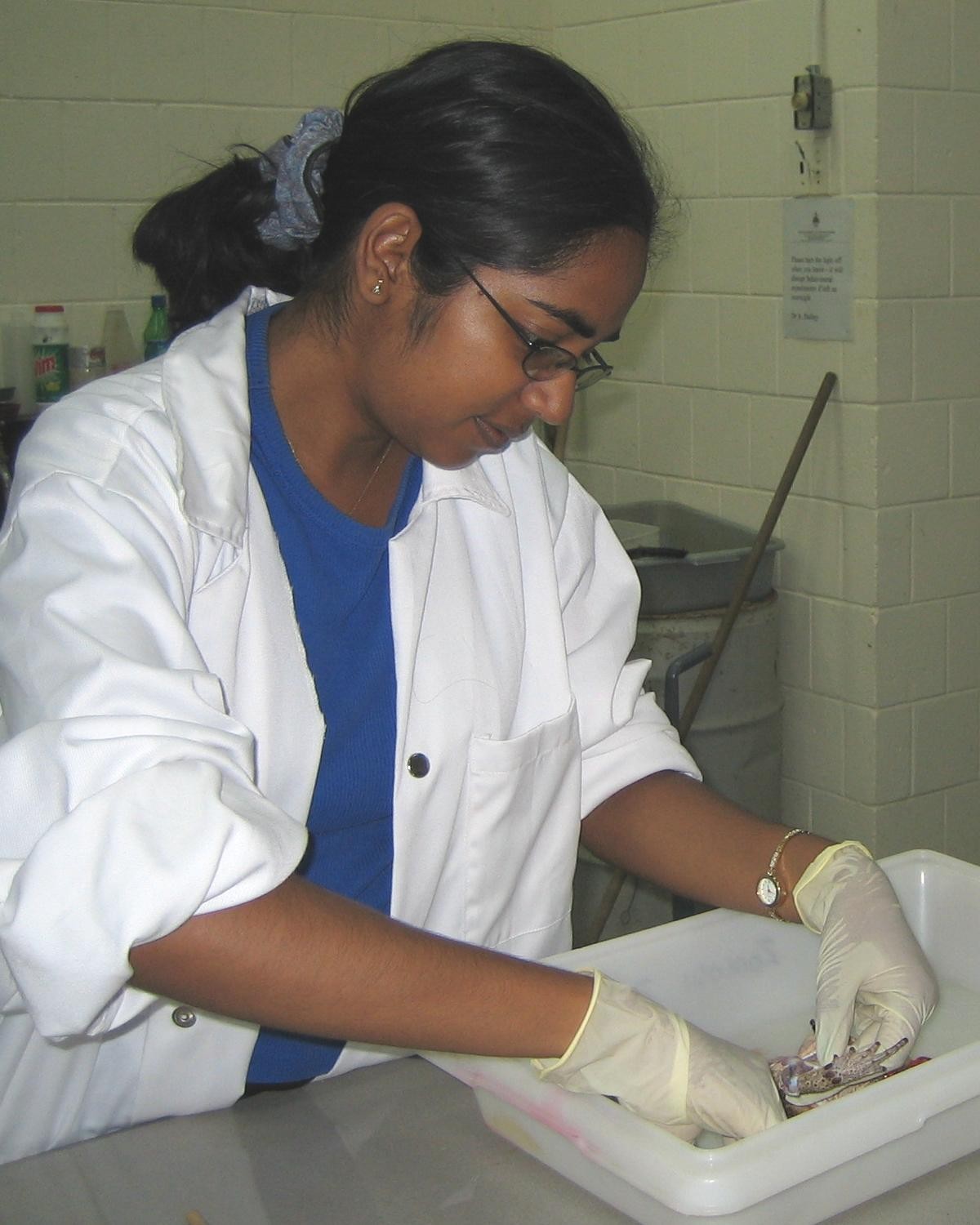 The eggs hatch in about 40 h so synchronous clutches from several pairs may be obtained easily from the
field. The tadpoles are generalized benthic feeders (Kenny, 1969). Initial work showed
that Physalaemus tadpoles may be reared at a density of 10/L
in either still or flowing
water systems, with better than 95% survival and 95% metamorphosis of survivors within
16 days of hatching. A soil substrate was the most important factor in successful rearing,
achieving faster develeopment than even high temperature
(Hailey et al., 2006).
The soil substrate also
mitigated a crowding effect, which otherwise reduced the growth performance of tadpoles reared
at densities greater than 10/L; with soil there was little effect of density up to the highest
values investigated (35 and 50/L)
(Hailey et al., 2007).
Nicole Sookoo paricipated in these experiments, peripheral to her own project, which also
involved Asif Khan (who was registered for an M.Phil. project on amphibian diversity for a few
months), and B.Sc. project students Devon Ramoo (2004) and Elena Hernandez (2005).
Nicole's own research tested the susceptibility of Physalaemus eggs and tadpoles to three
pesticides (Imidacloprid, Evisect, Fenobucarb) and three herbicides (Grammoxone, Roundup,
Karmax) commonly used in Trinidad, particularly in sugar cane cultivation. Both acute toxicity
at hatching and in older tadpoles, and developmental effects of chronic exposure in flowing
water systems, were investigated.
The second species studied was the cane toad Bufo marinus, which breeds in the dry
season (January to April) and thus complements the
wet-season breeder Physalaemus. The cane toad is also of interest in being more widely
used in physiology and ecotoxicology, as are other Bufo species, and having a more
typical reproductive strategy of aquatic eggs and larvae. The cane toad is also common in
a variety of habitats, including agricultural and suburban, and is of sufficient body size
to permit analysis of residues by tissue. Cane toad eggs are harder to collect from the wild,
so adults were maintained in captivity and reproduction was induced by hormone injection
(following the method of Reinier Mann and Mike Tyler in Adelaide). Tissue analysis for
residues by GC-MS had to be abandoned due to problems with the equipment in the Department
of Chemistry, an unfortunate circumstance as this was the part of the project of most
interest to Nicole Sookoo to make use of her joint zoology/chemistry background.
The eggs hatch in about 40 h so synchronous clutches from several pairs may be obtained easily from the
field. The tadpoles are generalized benthic feeders (Kenny, 1969). Initial work showed
that Physalaemus tadpoles may be reared at a density of 10/L
in either still or flowing
water systems, with better than 95% survival and 95% metamorphosis of survivors within
16 days of hatching. A soil substrate was the most important factor in successful rearing,
achieving faster develeopment than even high temperature
(Hailey et al., 2006).
The soil substrate also
mitigated a crowding effect, which otherwise reduced the growth performance of tadpoles reared
at densities greater than 10/L; with soil there was little effect of density up to the highest
values investigated (35 and 50/L)
(Hailey et al., 2007).
Nicole Sookoo paricipated in these experiments, peripheral to her own project, which also
involved Asif Khan (who was registered for an M.Phil. project on amphibian diversity for a few
months), and B.Sc. project students Devon Ramoo (2004) and Elena Hernandez (2005).
Nicole's own research tested the susceptibility of Physalaemus eggs and tadpoles to three
pesticides (Imidacloprid, Evisect, Fenobucarb) and three herbicides (Grammoxone, Roundup,
Karmax) commonly used in Trinidad, particularly in sugar cane cultivation. Both acute toxicity
at hatching and in older tadpoles, and developmental effects of chronic exposure in flowing
water systems, were investigated.
The second species studied was the cane toad Bufo marinus, which breeds in the dry
season (January to April) and thus complements the
wet-season breeder Physalaemus. The cane toad is also of interest in being more widely
used in physiology and ecotoxicology, as are other Bufo species, and having a more
typical reproductive strategy of aquatic eggs and larvae. The cane toad is also common in
a variety of habitats, including agricultural and suburban, and is of sufficient body size
to permit analysis of residues by tissue. Cane toad eggs are harder to collect from the wild,
so adults were maintained in captivity and reproduction was induced by hormone injection
(following the method of Reinier Mann and Mike Tyler in Adelaide). Tissue analysis for
residues by GC-MS had to be abandoned due to problems with the equipment in the Department
of Chemistry, an unfortunate circumstance as this was the part of the project of most
interest to Nicole Sookoo to make use of her joint zoology/chemistry background.
Physalaemus pustulosus nests are collected from small tempoary pools, where the
tadpoles are benthic feeders. Eggs hatch after two days, producing about 300 tadpoles per
nest.
A soil substrate proved to be the most important factor in rearing Physalaemus
successfully, either in still or flowing water systems. There was better than 95% survival
and 95% metamorphosis of survivors within 16 days of hatching.
Acute toxicity is measured using nest fractions hatching directly into test solutions, and
in older (Gosner stage 25-26) tadpoles. The latter are studied with (shown above)
or without a soil substrate.
Cane toads are maintained in captivity and induced to spawn by subcutaneous injection of
10 μg LH-RH.
Cane toad tadpoles will feed at the surface, unlike Physalaemus.
Funding
- TT$ 100,000 (two years), Dean's Award, School of Graduate Studies and Research,
University of the West Indies, St. Augustine.
Supervision
- Chief-supervisor: Dr Adrian Hailey, Department of Life Sciences, University of the West
Indies, St. Augustine.
- Co-supervisor: Dr Azad Mohammed, Department of Life Sciences, University of the West
Indies, St. Augustine. (Ecotoxicology)
- Advisor: Prof. John E. Cooper, School of Veterinary Medicine, University of the West
Indies, St. Augustine (Mount Hope Campus). (Pathology)
Results
-
Sookoo, N.J. (2012). Toxicology of Pesticides on the Larvae of Two Tropical Amphibians,
Physalaemus pustulosus and Bufo marinus.
Thesis,
Department of Life Sciences, The University of the West Indies, St. Augustine, ix+145 pp.
M.Phil. in Environmental Biology awarded 2013.
-
Hailey, A., Sookoo, N., Hernandez, E. & Ramoo, D. (2007). The influence of density and
ration level on cultured Physalaemus pustulosus tadpoles, and the mitigation of a
crowding effect by soil substrate. Appl. Herpetol. 4: 261-277.
download
-
Hailey, A., Sookoo, N., Mohammed, A. & Khan, A. (2006). Factors affecting tadpole
growth: Development of a rearing system for the Neotropical leptodactylid Physalaemus
pustulosus for ecotoxicological studies. Appl. Herpetol. 3: 111-128.
download
References
Hailey, A., Sookoo, N., Hernandez, E. & Ramoo, D. (2007). The influence of density and
ration level on cultured Physalaemus pustulosus tadpoles, and the mitigation of a
crowding effect by soil substrate. Appl. Herpetol. 4: 261-277.
Hailey, A., Sookoo, N., Mohammed, A. & Khan, A. (2006). Factors affecting tadpole
growth: Development of a rearing system for the Neotropical leptodactylid Physalaemus
pustulosus for ecotoxicological studies. Appl. Herpetol. 3: 111-128.
Kenny, J.S. (1969). The amphibia of Trinidad. Studies on the Fauna of Curacao and Other
Caribbean Islands 29: 1-78.
McDiarmid, R.W., and Mitchell, J.C. (2000). Diversity and distribution of amphibians and
reptiles. In: Ecotoxicology of Amphibians and Reptiles, p. 15-69. Sparling, D.W., Linder,
G., and Bishop, C.A., Eds, Pensacoloa, FL, SETAC Press.
Rowe, C.L., Hopkins, W.A., and Bridges, C.M. (2003). Physiological ecology of amphibians in
relation to susceptibility to natural and anthropogenic factors. In: Amphibian Decline: An
Integrated Analysis of Multiple Stressor Effects, p. 9-57. Linder, G., Krest, S.K.,
and Sparling, D.W., Eds, Pensacoloa, FL, SETAC Press.
Ryan, M.J. (1985). The Túngara Frog: A Study in Sexual Selection and Communication. Chicago,
University of Chicago Press.
Young, B.E., Stuart, S.N., Chanson, J.S., Cox, N.A., and Boucher, T.M. (2004): Disappearing
Jewels: The Status of New World Amphibians. Arlington, VA, NatureServe.
 Leptodactylids are also of interest in having
diverse reproductive modes including aquatic and terrestrial foam nests and direct terrestrial
development, and in being an important component of the fauna of
the Neotropics, an area of particular conservation concern for amphibians (Young et al., 2004).
Physalaemus pustulosus is the best-studied leptodactylid with classic work on many aspects
of its ecology and behaviour (Ryan, 1985). Several characteristics of Physalaemus
make it suitable for ecotoxicological work. It is
widely distributed; abundant in savanna and modified savanna habitats, including
agricultural and
urban fringes; an explosive breeder during the rainy season, producing foam nests at the
surface of shallow pools which are conspicuous and easily collected and contain a
good sample size of a few hundred eggs.
Leptodactylids are also of interest in having
diverse reproductive modes including aquatic and terrestrial foam nests and direct terrestrial
development, and in being an important component of the fauna of
the Neotropics, an area of particular conservation concern for amphibians (Young et al., 2004).
Physalaemus pustulosus is the best-studied leptodactylid with classic work on many aspects
of its ecology and behaviour (Ryan, 1985). Several characteristics of Physalaemus
make it suitable for ecotoxicological work. It is
widely distributed; abundant in savanna and modified savanna habitats, including
agricultural and
urban fringes; an explosive breeder during the rainy season, producing foam nests at the
surface of shallow pools which are conspicuous and easily collected and contain a
good sample size of a few hundred eggs.
 The eggs hatch in about 40 h so synchronous clutches from several pairs may be obtained easily from the
field. The tadpoles are generalized benthic feeders (Kenny, 1969). Initial work showed
that Physalaemus tadpoles may be reared at a density of 10/L
in either still or flowing
water systems, with better than 95% survival and 95% metamorphosis of survivors within
16 days of hatching. A soil substrate was the most important factor in successful rearing,
achieving faster develeopment than even high temperature
(Hailey et al., 2006).
The soil substrate also
mitigated a crowding effect, which otherwise reduced the growth performance of tadpoles reared
at densities greater than 10/L; with soil there was little effect of density up to the highest
values investigated (35 and 50/L)
(Hailey et al., 2007).
Nicole Sookoo paricipated in these experiments, peripheral to her own project, which also
involved Asif Khan (who was registered for an M.Phil. project on amphibian diversity for a few
months), and B.Sc. project students Devon Ramoo (2004) and Elena Hernandez (2005).
Nicole's own research tested the susceptibility of Physalaemus eggs and tadpoles to three
pesticides (Imidacloprid, Evisect, Fenobucarb) and three herbicides (Grammoxone, Roundup,
Karmax) commonly used in Trinidad, particularly in sugar cane cultivation. Both acute toxicity
at hatching and in older tadpoles, and developmental effects of chronic exposure in flowing
water systems, were investigated.
The second species studied was the cane toad Bufo marinus, which breeds in the dry
season (January to April) and thus complements the
wet-season breeder Physalaemus. The cane toad is also of interest in being more widely
used in physiology and ecotoxicology, as are other Bufo species, and having a more
typical reproductive strategy of aquatic eggs and larvae. The cane toad is also common in
a variety of habitats, including agricultural and suburban, and is of sufficient body size
to permit analysis of residues by tissue. Cane toad eggs are harder to collect from the wild,
so adults were maintained in captivity and reproduction was induced by hormone injection
(following the method of Reinier Mann and Mike Tyler in Adelaide). Tissue analysis for
residues by GC-MS had to be abandoned due to problems with the equipment in the Department
of Chemistry, an unfortunate circumstance as this was the part of the project of most
interest to Nicole Sookoo to make use of her joint zoology/chemistry background.
The eggs hatch in about 40 h so synchronous clutches from several pairs may be obtained easily from the
field. The tadpoles are generalized benthic feeders (Kenny, 1969). Initial work showed
that Physalaemus tadpoles may be reared at a density of 10/L
in either still or flowing
water systems, with better than 95% survival and 95% metamorphosis of survivors within
16 days of hatching. A soil substrate was the most important factor in successful rearing,
achieving faster develeopment than even high temperature
(Hailey et al., 2006).
The soil substrate also
mitigated a crowding effect, which otherwise reduced the growth performance of tadpoles reared
at densities greater than 10/L; with soil there was little effect of density up to the highest
values investigated (35 and 50/L)
(Hailey et al., 2007).
Nicole Sookoo paricipated in these experiments, peripheral to her own project, which also
involved Asif Khan (who was registered for an M.Phil. project on amphibian diversity for a few
months), and B.Sc. project students Devon Ramoo (2004) and Elena Hernandez (2005).
Nicole's own research tested the susceptibility of Physalaemus eggs and tadpoles to three
pesticides (Imidacloprid, Evisect, Fenobucarb) and three herbicides (Grammoxone, Roundup,
Karmax) commonly used in Trinidad, particularly in sugar cane cultivation. Both acute toxicity
at hatching and in older tadpoles, and developmental effects of chronic exposure in flowing
water systems, were investigated.
The second species studied was the cane toad Bufo marinus, which breeds in the dry
season (January to April) and thus complements the
wet-season breeder Physalaemus. The cane toad is also of interest in being more widely
used in physiology and ecotoxicology, as are other Bufo species, and having a more
typical reproductive strategy of aquatic eggs and larvae. The cane toad is also common in
a variety of habitats, including agricultural and suburban, and is of sufficient body size
to permit analysis of residues by tissue. Cane toad eggs are harder to collect from the wild,
so adults were maintained in captivity and reproduction was induced by hormone injection
(following the method of Reinier Mann and Mike Tyler in Adelaide). Tissue analysis for
residues by GC-MS had to be abandoned due to problems with the equipment in the Department
of Chemistry, an unfortunate circumstance as this was the part of the project of most
interest to Nicole Sookoo to make use of her joint zoology/chemistry background.